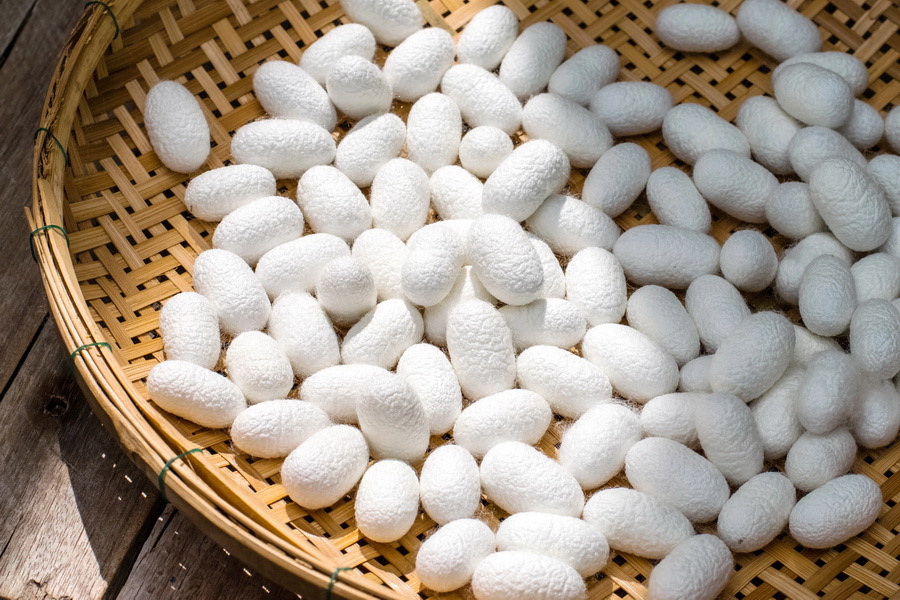
According to the ancient written sources mulberries were usually planted in deserts, field boundaries, in front of the houses. In the third month of the lunar calendar which was called “silkworm month” silkworms breeding process started. On the first day of this month women washed grain (silkworm eggs) with pure water and then placed them in warm “silkworm house”. To stimulate fast birth of caterpillars the grain was watered with herbal decoction. It was mandatory to maintain precise temperature and silence in “silkworm house”, to keep it clean, ventilate but avoid excessive air movement. Initially the grain was kept in feeding troughs. In 20-22 days caterpillars started to pupate. After that they were placed in sieves and put on wooden racks. Then the cocoons were scalded with boiled water and threads were unwound. As a result of this operation sericin was partially washed away and untouched filament of 700-1,000m in length remained. The filaments turned into one thread by means of a spinning wheel.

